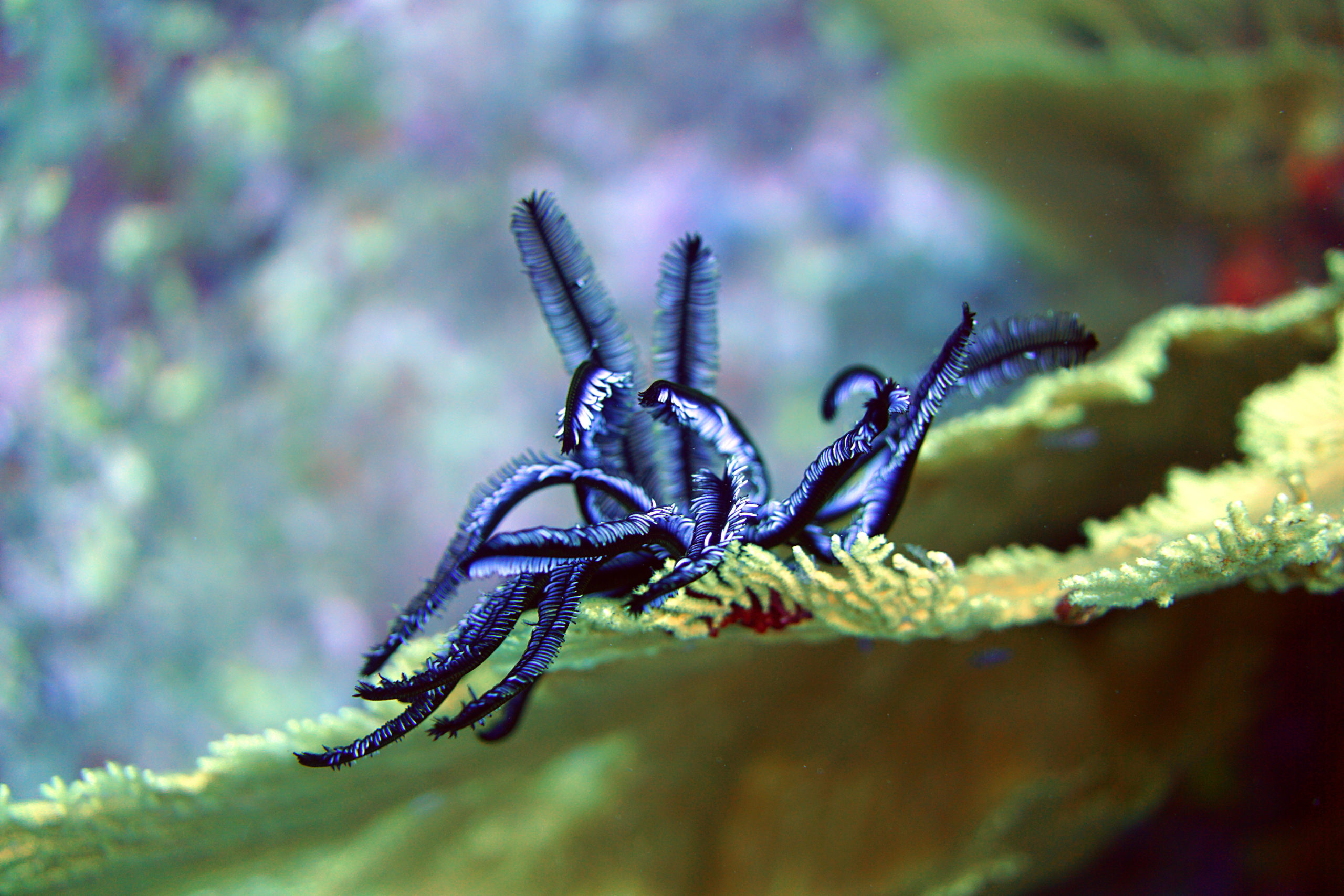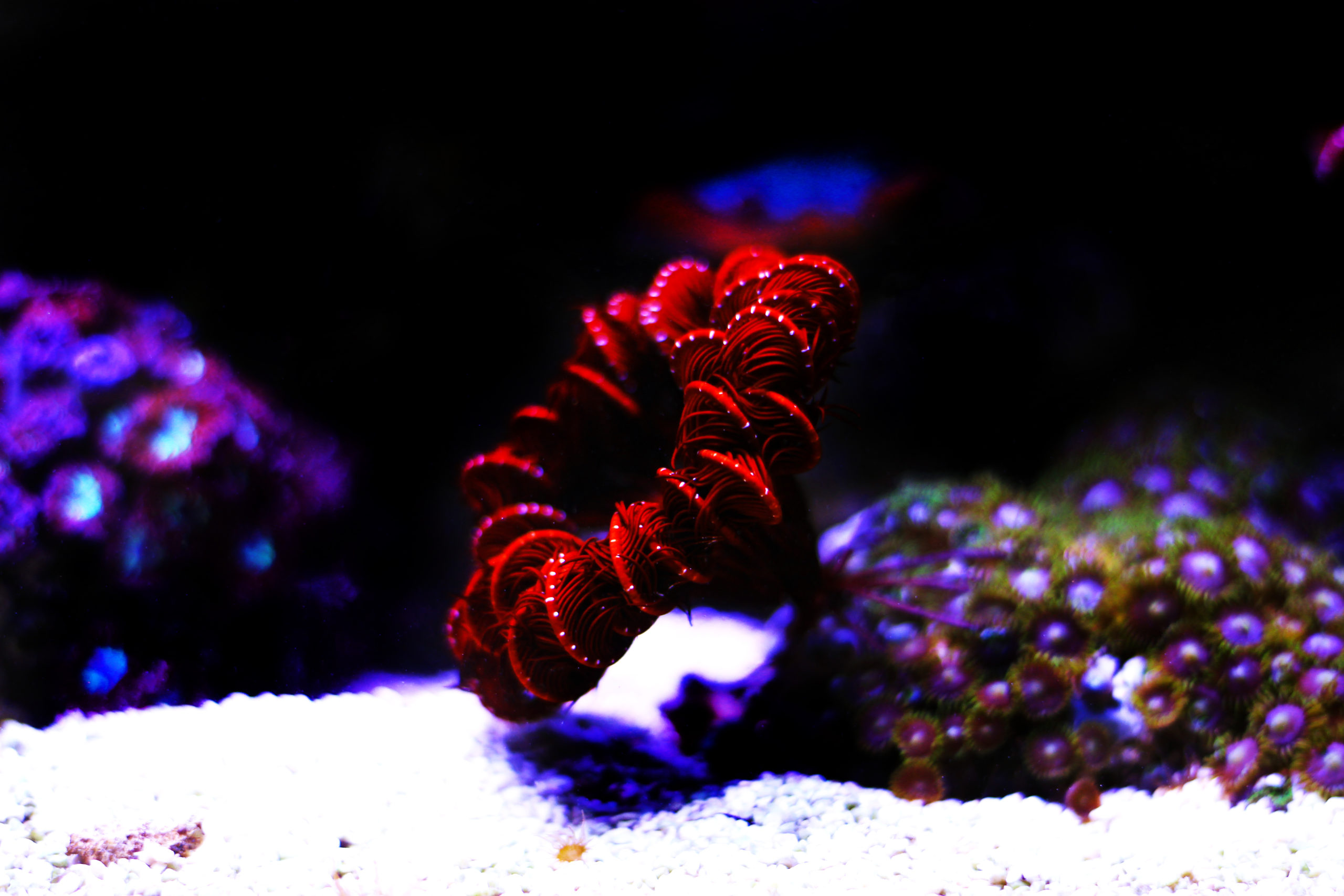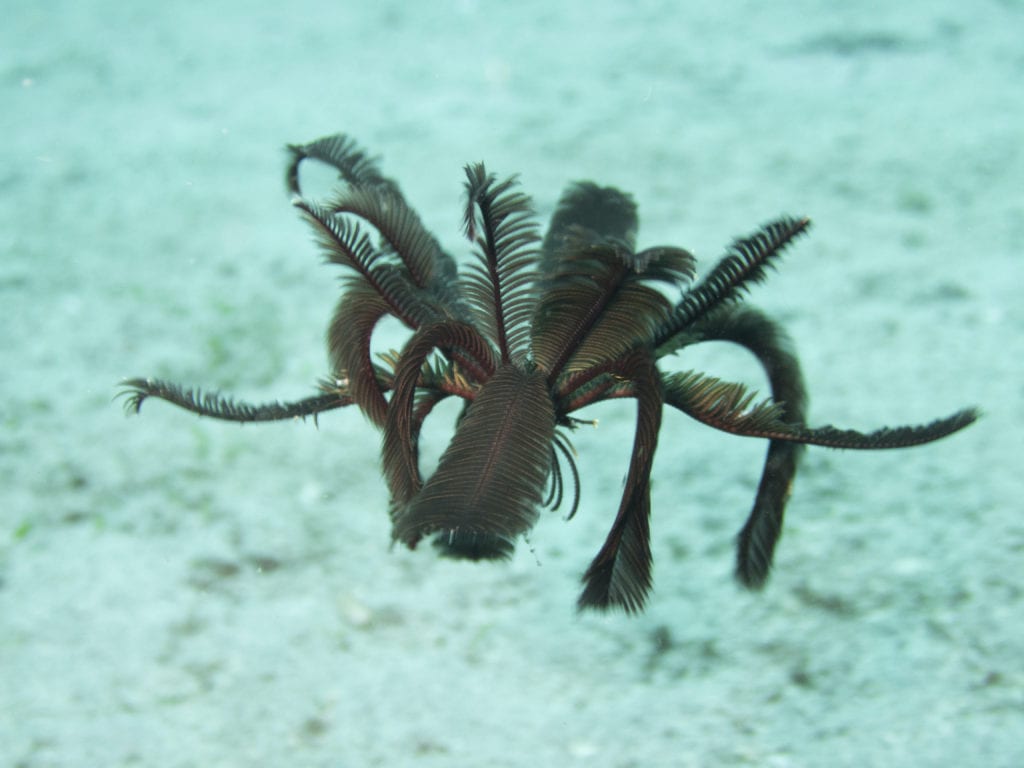The oceans have put forth many evolutionary marvels – that we are still discovering all the time – and looking at the way a Crinoid lives and moves is nothing short of perplexing and amazing.
The oceans have put forth many evolutionary marvels – that we are still discovering all the time – and looking at the way a Crinoid lives and moves is nothing short of perplexing and amazing.

Black feather starfish, Colobometra perspinosa
Black feather starfish, Colobometra perspinosa
The feather stars, Comatudlida, have five ‘feathery’ appendages surrounding an upward-facing mouth. The feathers help to catch plankton and other small particles and direct them towards the central mouth.
Interestingly, feather stars do not have many natural predators as their mostly calcium carbonate body is generally not appetising. Some fish will make off with the occasional limb, but the body mass can be regenerated. Researches report around half of the observed specimens to have regenerating wounds, so it seems to be a bit of a tough life for feather stars as they drift around (looking really tasty, apparently).
The feather stars, Comatudlida, have five ‘feathery’ appendages surrounding an upward-facing mouth. The feathers help to catch plankton and other small particles and direct them towards the central mouth.
Interestingly, feather stars do not have many natural predators as their mostly calcium carbonate body is generally not appetising. Some fish will make off with the occasional limb, but the body mass can be regenerated. Researches report around half of the observed specimens to have regenerating wounds, so it seems to be a bit of a tough life for feather stars as they drift around (looking really tasty, apparently).

Red feather star, Himerometra robustipinna
Red feather star, Himerometra robustipinna
Comatulids live in shallow reefs and temperate, tropical waters. They all start their life with a stalk that is attached to the reef bed substrate, which prompted their naming of Crinoids (lily-like). Feather stars (Comatulids) in particular, are free-swimming as adults. Other species of Crinoids stay attached for their whole lifespan.
Despite being able to move, most feather stars opt to conceal themselves within corals, sponges and crevices. Given the rate of other animals making off with their limbs, who can blame them?
They tend to orient themselves favourably with the current for optimal catching of particles. Feather stars reproduce externally, and their planktonic larvae will drift, settle on the sea bed and then anchor themselves there with the characteristic stalk to being growing.
Comatulids live in shallow reefs and temperate, tropical waters. They all start their life with a stalk that is attached to the reef bed substrate, which prompted their naming of Crinoids (lily-like). Feather stars (Comatulids) in particular, are free-swimming as adults. Other species of Crinoids stay attached for their whole lifespan.
Despite being able to move, most feather stars opt to conceal themselves within corals, sponges and crevices. Given the rate of other animals making off with their limbs, who can blame them?
They tend to orient themselves favourably with the current for optimal catching of particles. Feather stars reproduce externally, and their planktonic larvae will drift, settle on the sea bed and then anchor themselves there with the characteristic stalk to being growing.
Some aquaria enthusiasts have tried to keep different species of Crinoids in captive settings, but this appears to be a complicated affair – and successful breeding even more so.
But not a great deal is understood about these strange animals and so observing and preserving them in well-made captive environments may serve research and conservation beneficially in the future, as it has done with herpetofauna.
Some aquaria enthusiasts have tried to keep different species of Crinoids in captive settings, but this appears to be a complicated affair – and successful breeding even more so.
But not a great deal is understood about these strange animals and so observing and preserving them in well-made captive environments may serve research and conservation beneficially in the future, as it has done with herpetofauna.
